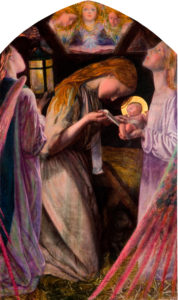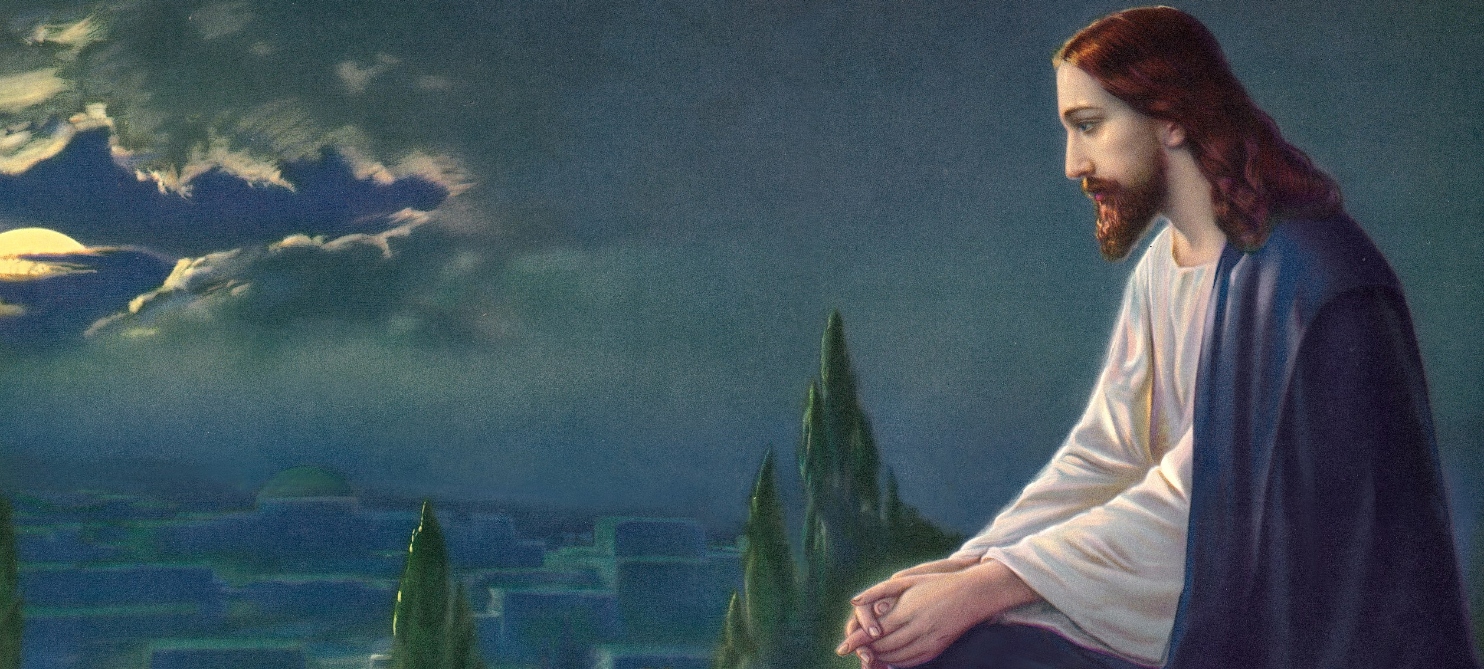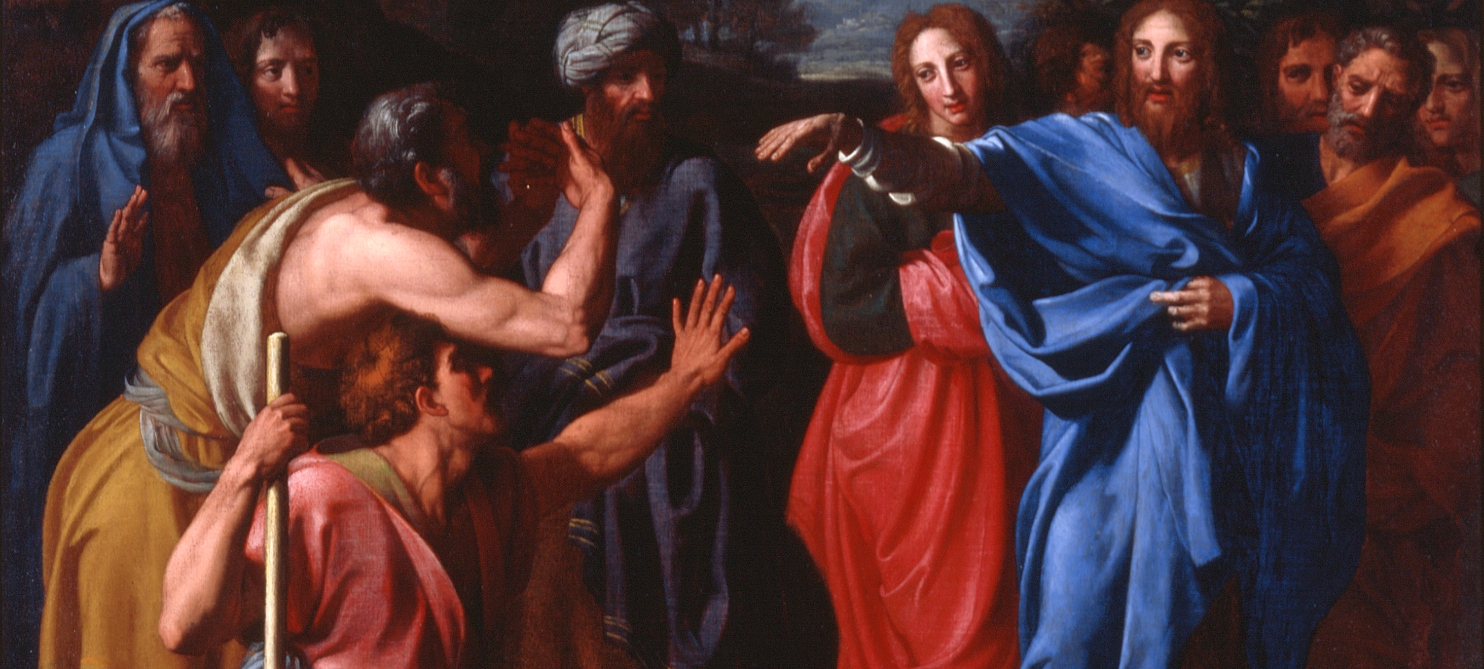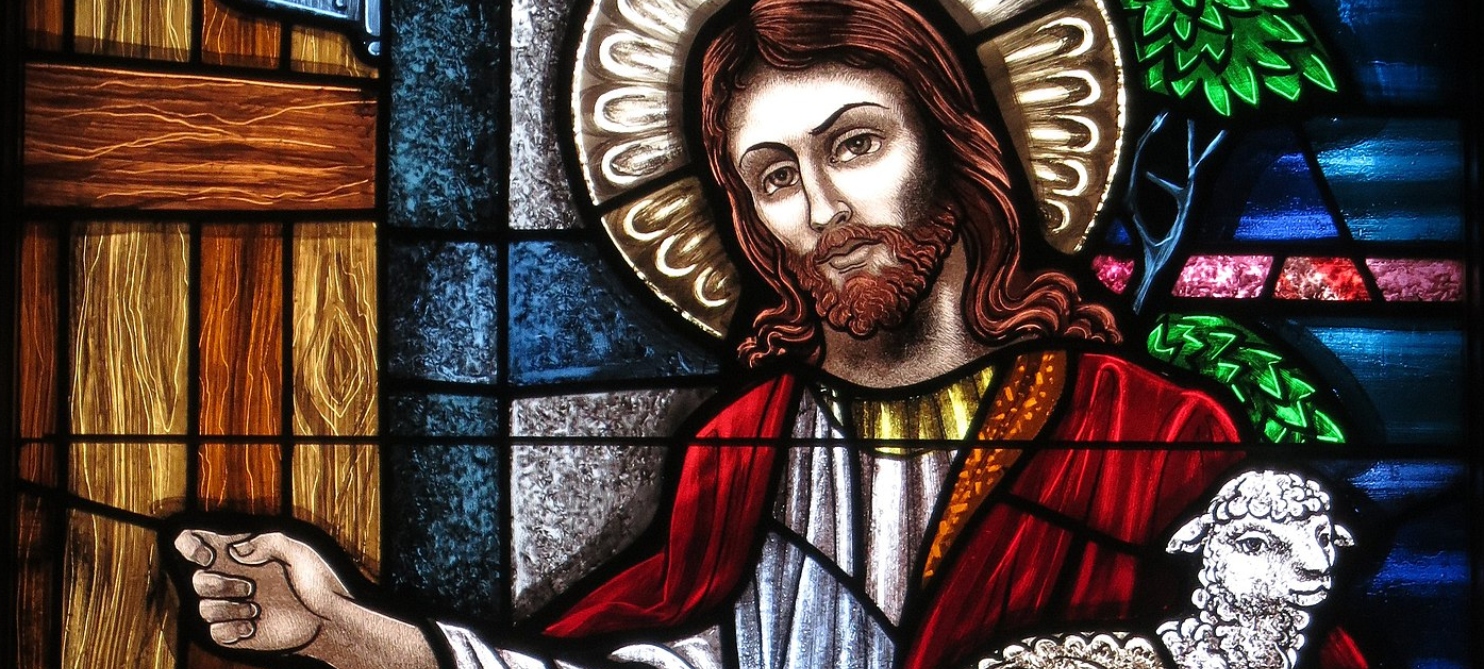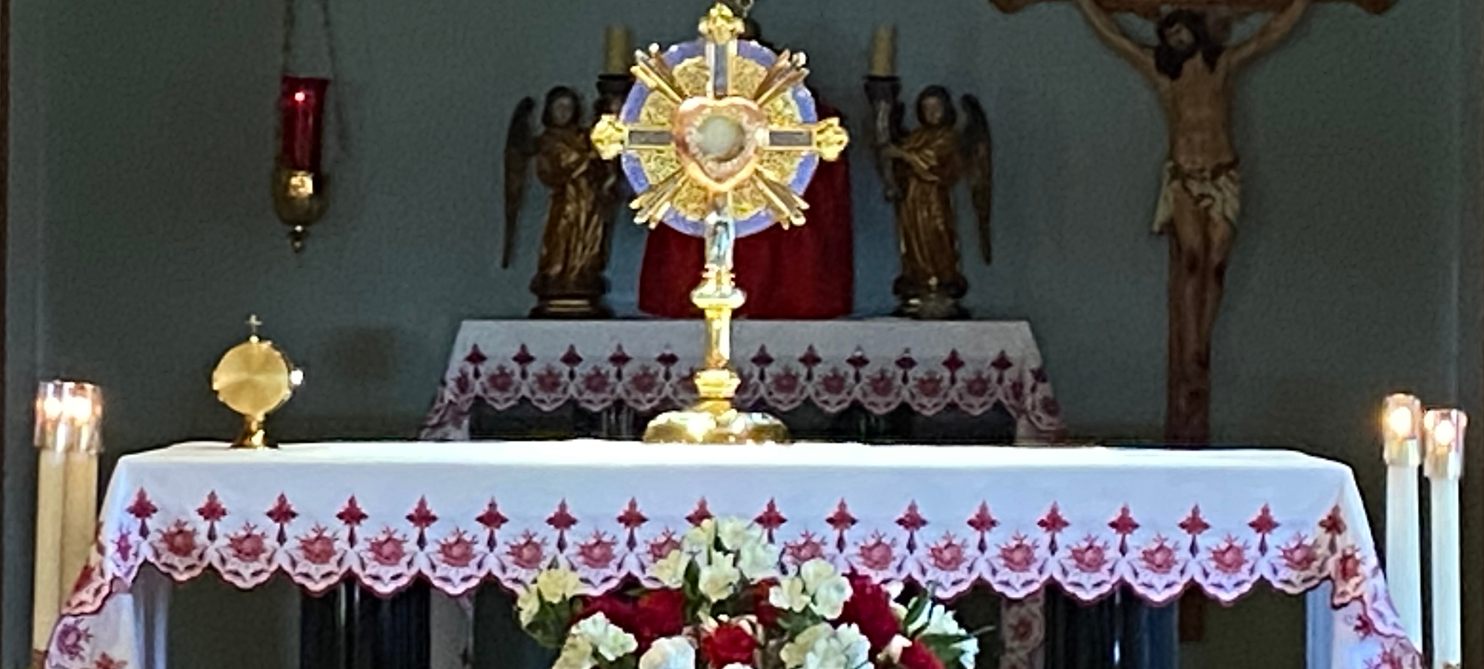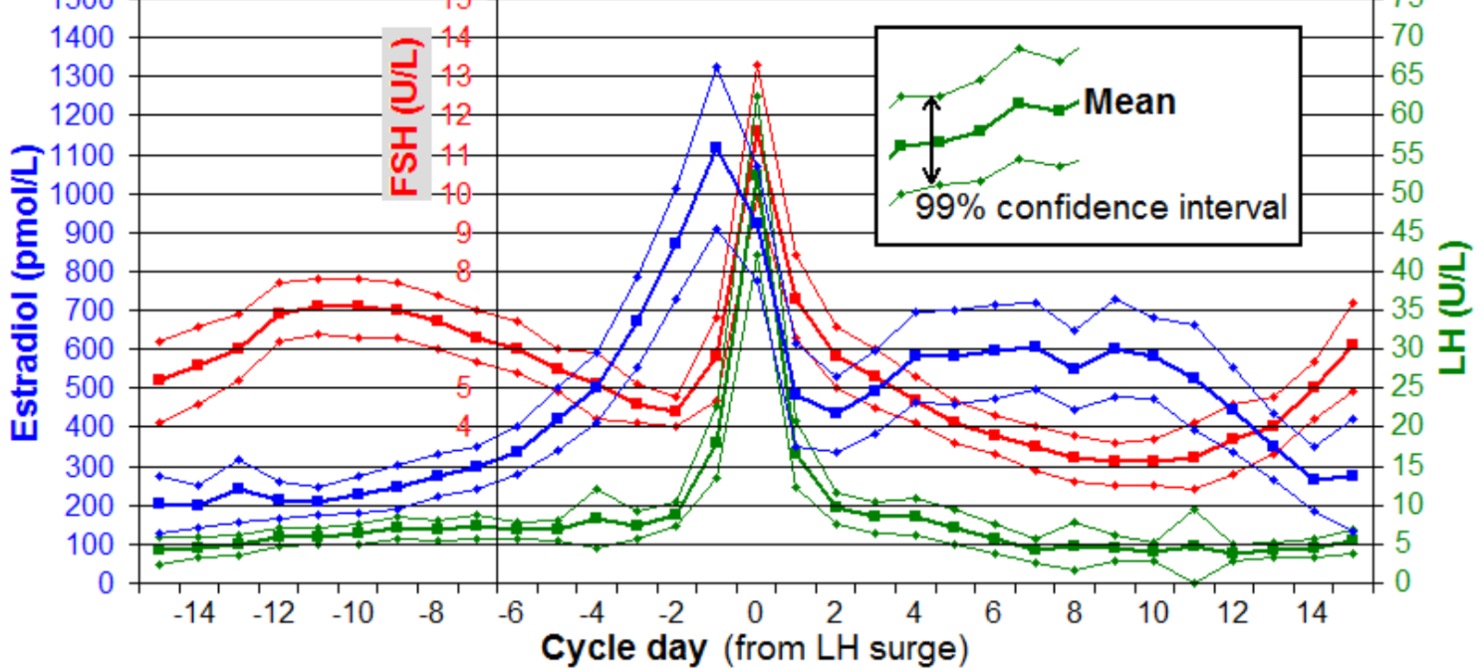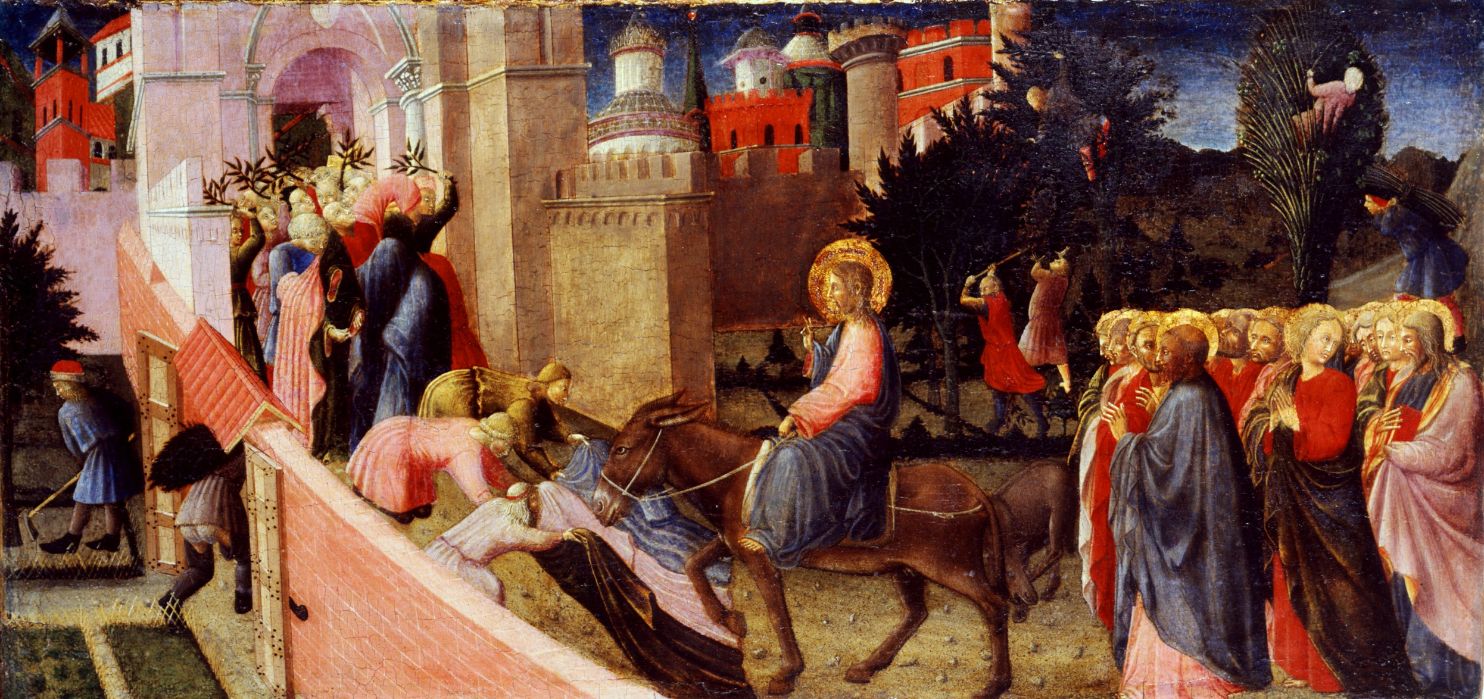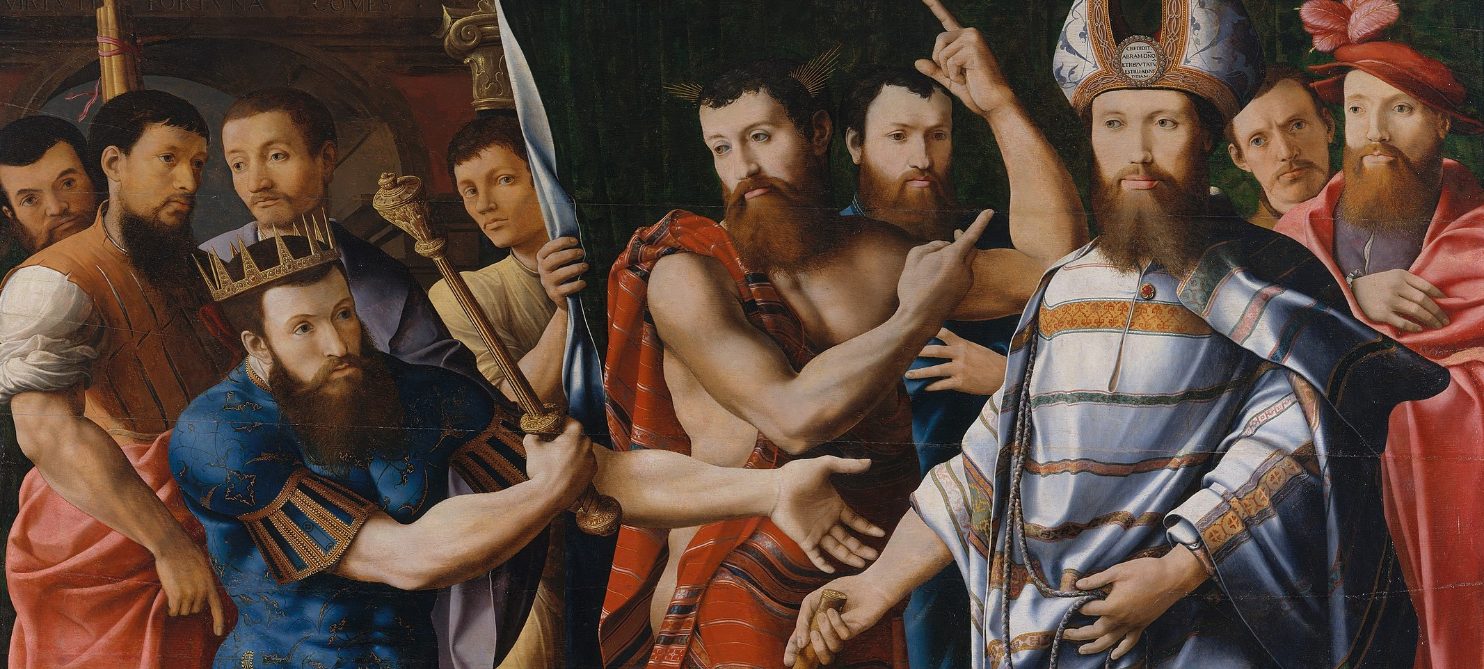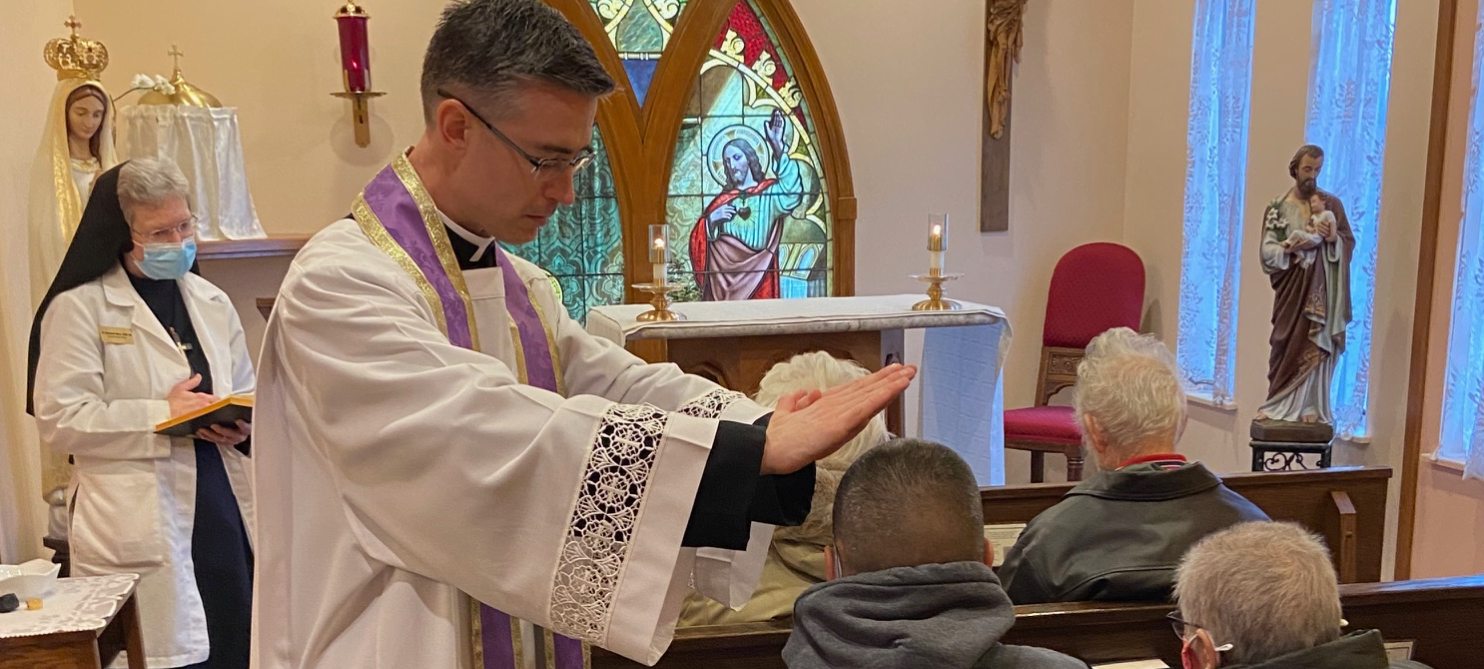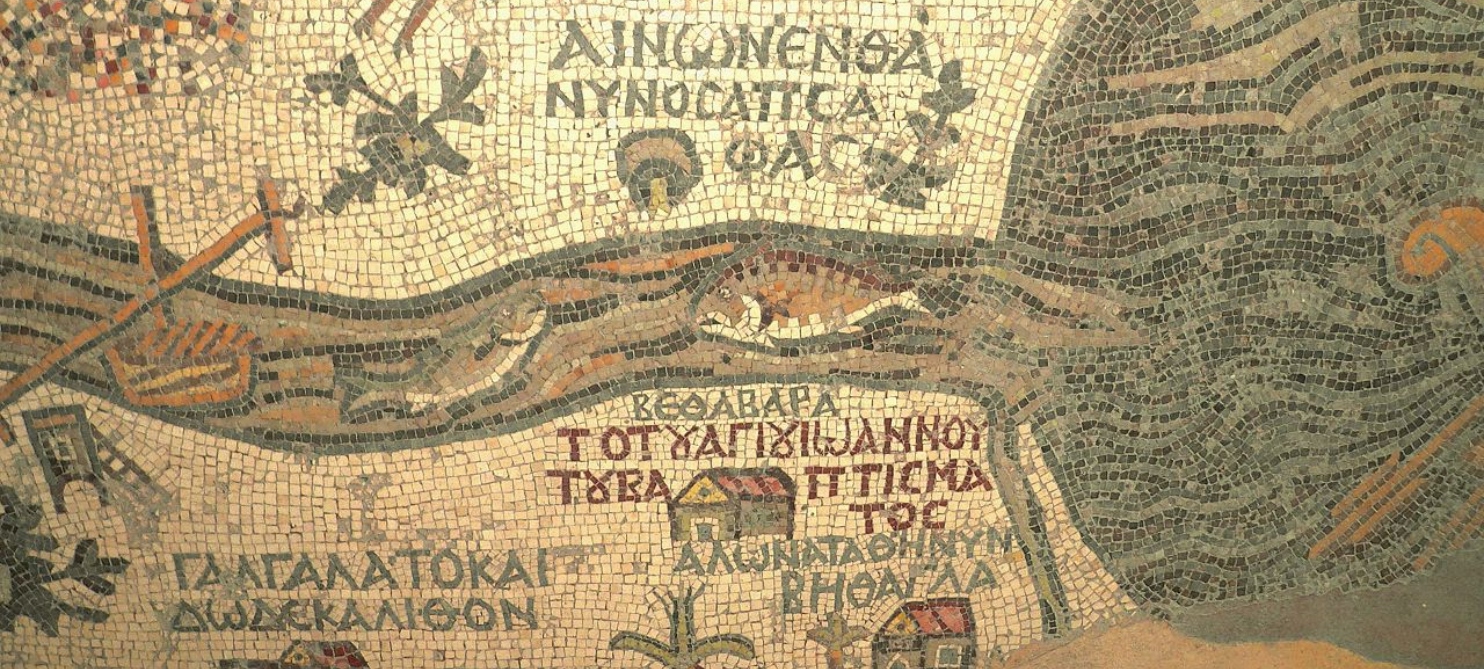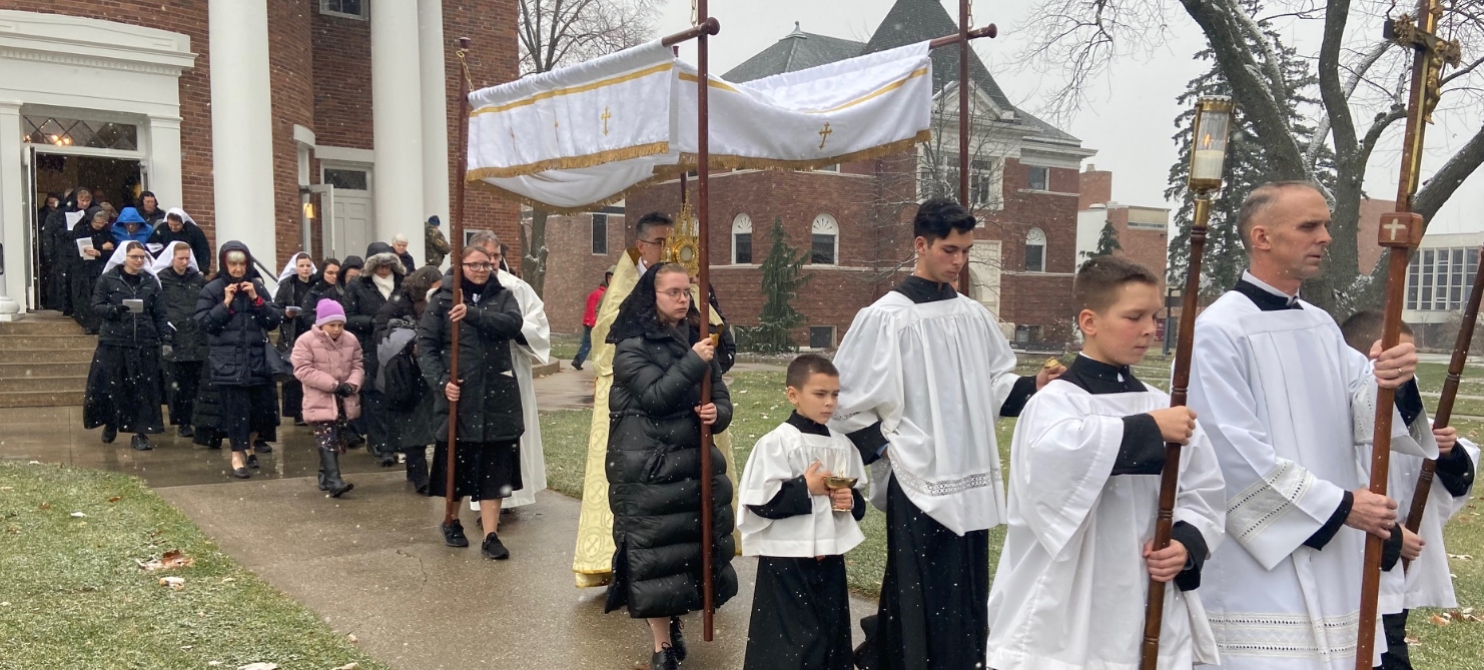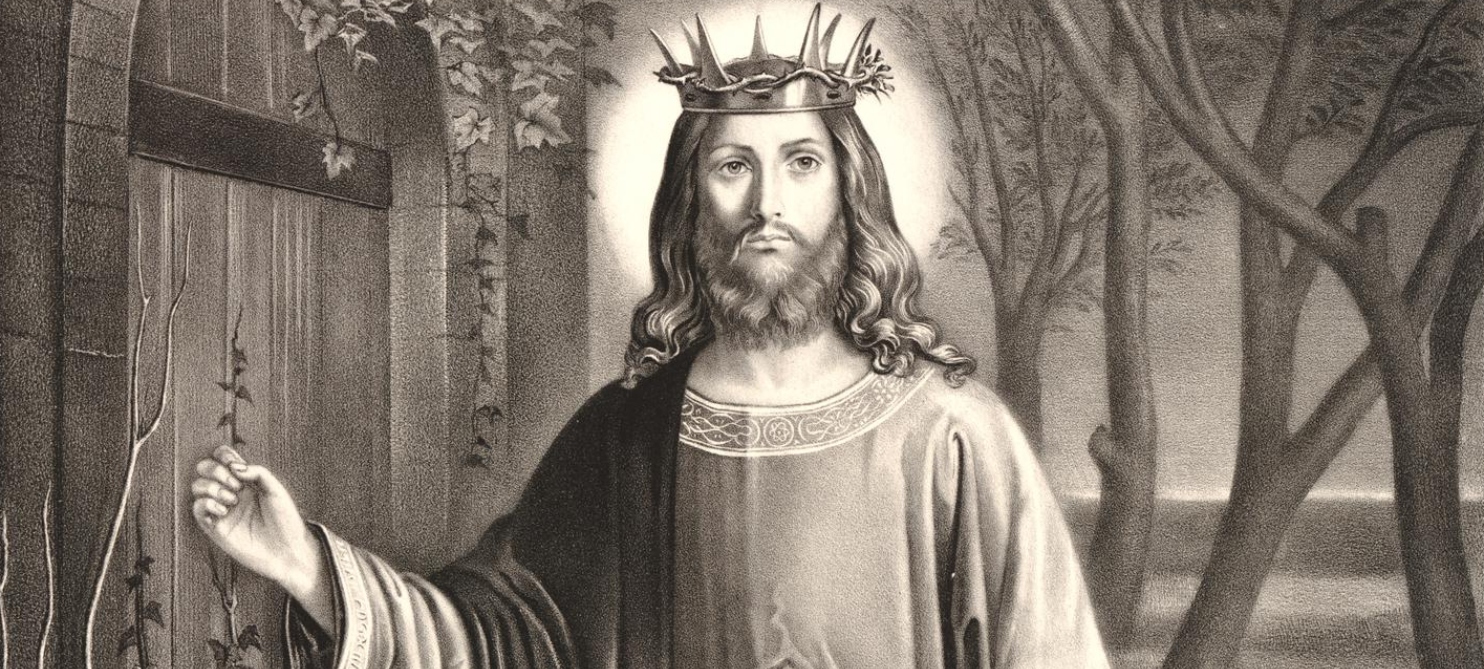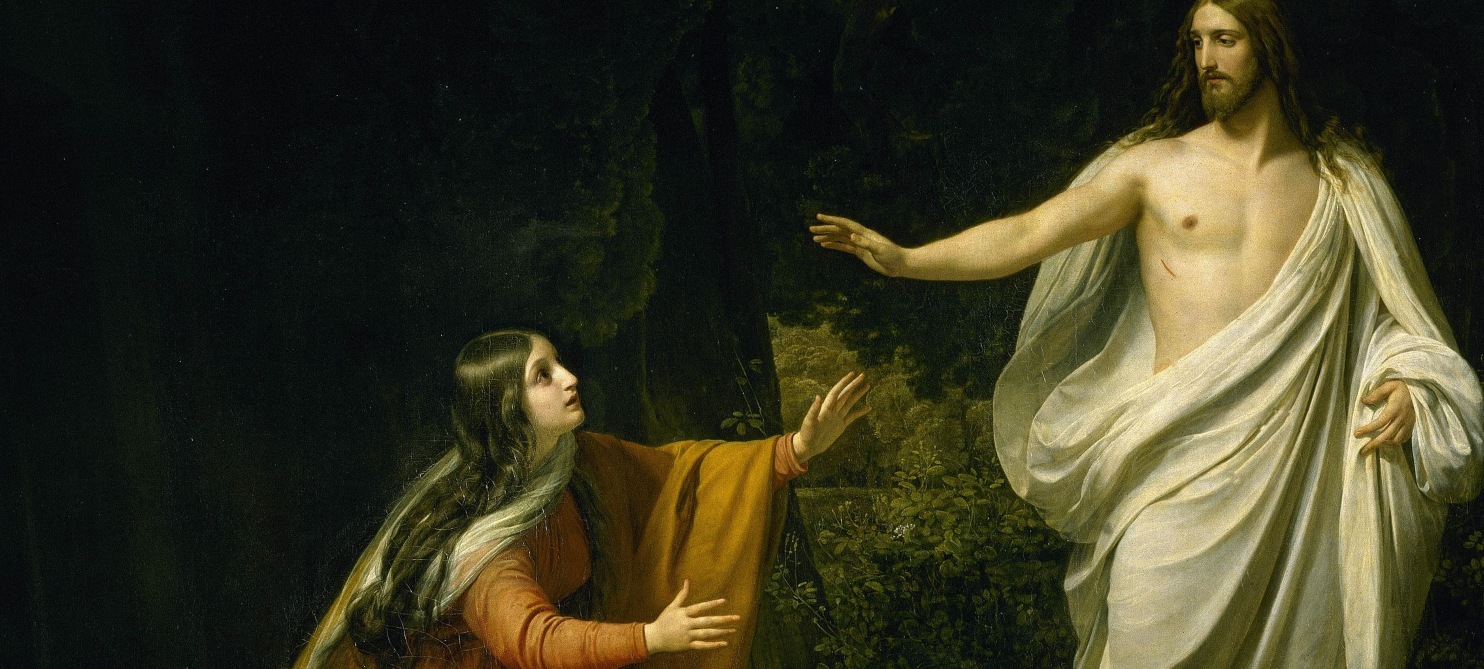The transforming power of the gaze of Jesus…Love’s Vision
This Christmas, I offer this reflection taken from a book written by Archbishop Luiz Martinez called Only Jesus. The first chapter of the book is called Love’s Vision. Let yourself be immersed in the richness of his images and language and fortified with this solid spiritual theology. Then, at the very end there is a portion of a commentary on Luke by St. Ambrose, which echoes similar themes.
May we be transformed by love, by His gazing on us and our gazing on Him. With Mary, the Mother of God, let us magnify the image of God in our souls.
On the manger straw the celestial babe lay wrapped in the whitest of swaddling clothes. His sweet Mother contemplated Him in silence, her heart melted with tenderness, her soul absorbed in profound adoration. Jesus open His eyes and from those two divine suns radiated His first look of love.
What was that look? What was it like, O Virgin Mary? It met your virginal eyes, captivating your most pure soul; it was for you. For whom else could it have been? Where would the divine light be reflected but in the immaculate mirror of your purity? And you kept it there in the depths of your soul like an inextinguishable light in the blue of your sky. May our glorified eyes see the splendor of that gaze when we behold your countenance on the day of never-ending intimacies. But the impatience of our love dares in our exile to dream of the mystery of that divine look….
But out of the eyes of Jesus not only His soul, but the uncreated Light, the Word of God, shone forth. The Father engenders His Son with a single glance, infinite and eternal, and the Word, Light of light, is the living reflection of the eternal look of the Father. In the bosom of God, the Father and the Son behold each other and there springs forth from them, like an infinite flame of love, the Holy Spirit. The mystery of the Trinity is the mystery of an eternal and ineffable contemplation of love…
The Word does not look at the Father only, nor must the Father be seen only by the Son. Therefore, every glance at Jesus is the eternal look of the Word both hiding and revealing itself in the visible light of His eyes. In the same way, every gaze that centers upon the Word—the look of faith, of love, of contemplation–is really the look of the Father which both hides and reveals itself in the expressions of souls. But in no look is that of the Father revealed with so great perfection as in the eyes of Mary. Thus, as the Father communicated his fecundity to the gentle Virgin when the Holy Spirit covered her with His shadow, so He desired to communicate to Mary a reflection of His eternal gaze. When Jesus, opening His divine eyes, met Mary’s gaze, He was filled with ineffable complacency because He discovered the Father looking upon Him through the pure, mild, tender eyes of the Virgin Mary. And in this valley of tears, in the poor, humble cave of Bethlehem, He appeared before the wondering angels as a new revelation of the eternal mystery of the life of God. When the looks of Jesus and Mary were joined in the holy unity of love, heaven and earth were filled with the glory of God and with that true peace of which the angels sang on that blessed night.
The mystery of those two looks, unique in their perfection, continues to be reproduced throughout the centuries in different degrees. Jesus wants to look at souls as He looked at Mary and He wants to be looked at by souls as Mary looked at Him. He came to earth for that purpose, so that by His looking at us and our looking at Him, our hearts might be carried away to the heights of invisible things, to the bosom of the Trinity, to share in the mystery of the eternal contemplation of love. Thus, the Church sings in the Preface of Christmas: “And we are drawn to the love of things unseen through Him whom we acknowledge as God, now seen by men.”
The first look of Jesus had something transitory about it as if subject to time, but it also had something immutable and permanent, divine and eternal. Out of the centuries there comes to each soul of goodwill the unspeakable delight of the first look of Jesus without fading of its freshness, the abatement of his ardor, or the loss of its divine charity. The soul that receives it ought to respond by reproducing Mary’s look, pure, tender, exceedingly holy, a copy of the Father’s look, created but exact. And in the littleness and misery of each soul–happy reproduction of Bethlehem–the Word sees the Father, and again the sacred mystery is reproduced upon earth, a sure hope, and infallible pledge that such a soul will enter one day into the perfect joy of the eternal sight of God.[i]
From Saint Ambrose in a reading from the final days of Advent:
Let Mary’s soul be in each of you to proclaim the greatness of the Lord. Let her spirit be in each to rejoice in the Lord. Christ has only one mother in the flesh, but we all bring forth Christ in faith. Every soul receives the Word of God if only it keeps chaste, remaining pure and free from sin, its modesty undefiled. The soul that succeeds in this proclaims the greatness of the Lord, just as Mary’s soul magnified the Lord and her spirit rejoiced in God her Savior. In another place we read: Magnify the Lord with me. The Lord is magnified, not because the human voice can add anything to God but because he is magnified within us. Christ is the image of God, and if the soul does what is right and holy, it magnifies that image of God, in whose likeness it was created and, in magnifying the image of God, the soul has a share in its greatness and is exalted.[ii]
See the entire reading of St. Ambrose | From a Commentary of Luke by Saint Ambrose: Mary Visits Elizabeth
Hughes, Arthur. “The Nativity c. 1892.” The Nativity | Art UK. Birmingham Museums Trust, December 14, 2020. https://artuk.org/discover/artworks/the-nativity-33682. With Creative Commons / Wikimedia Commons
[i] Martínez Luis M. Only Jesus. Edited by Jordan Aumann. Translated by Sister Mary St. Daniel. Vol. 22. Cross and Crown Series of Spirituality. St Louis, MO: B. Herder Book Co., 1963, Excerpts from Chapter 1: “Love’s Vision,” pp. 3-4, 6-7.
[ii] Saint, Ambrose. “From a Commentary of Luke by Saint Ambrose: Mary Visits Elizabeth.” December 21 – Office of Readings. Accessed December 21, 2020. http://www.liturgies.net/Liturgies/Catholic/loh/advent/december21or.htm.
(Lib 2, 19.22-23, 26-27: CCL 14, 39-42)
Posted December 25, 2020
